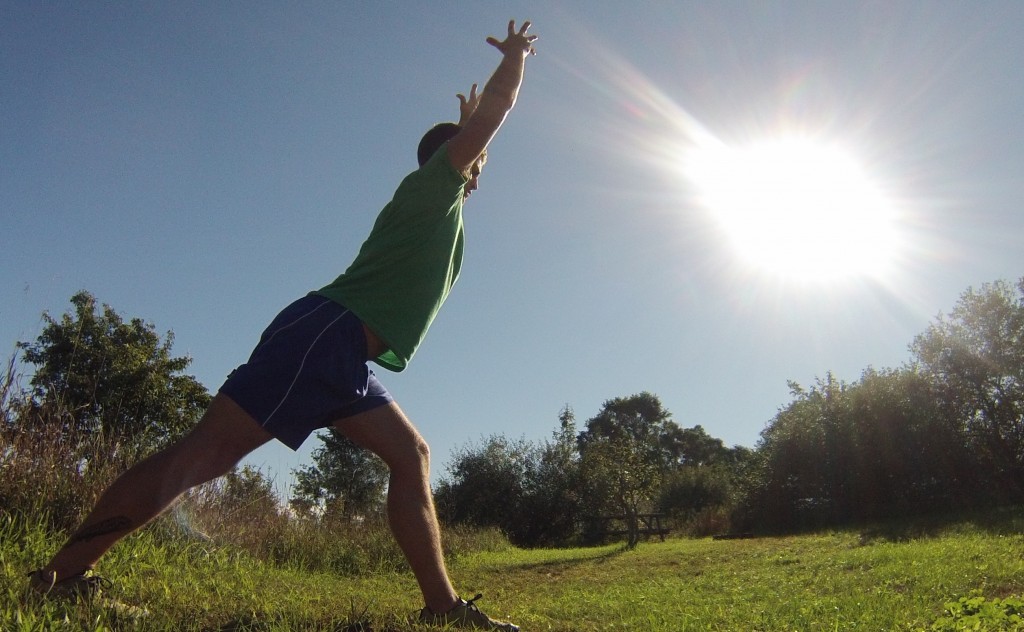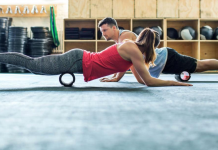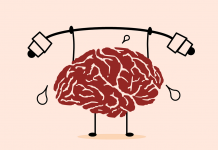By Dr. Mercola
Dr. Eric Goodman is the creator of Foundation Training, a highly effective protocol. Foundation Training focuses on body weight exercises that integrate as many muscles as possible to strengthen and elongate your core and posterior chain — which includes all the muscles that connect to your pelvis, whether above or below it — thereby alleviating many chronic pain issues.
The protocol has evolved over the years, and I’ve interviewed Goodman twice before, in 2013 and the most recent two years ago in 2014, covering various updates.
In this interview, he delves into some of the details covered in his latest book, “True to Form: How to Use Foundation Training for Sustained Pain Relief and Everyday Fitness.”
Goodman, who is trained as a chiropractor, is a pioneer in the world of structural biomechanics. His program teaches you to optimize your posture, thereby decreasing bodily pain and your risk of exercise injury.
“The idea is really simple. Our body is made to help itself. As long as we can get the muscles to align it properly, our breathing patterns to align properly, our pelvic muscles to be more stabilized, our posture will involuntarily become stronger,” he explains.
“My education is in chiropractic. I’m licensed in Colorado and California, but I only really see patients if they need an adjustment for some reason that they can’t do the poses.”
Why Foundation Training?
While in chiropractic school, Goodman developed severe low back pain. His doctors suggested surgery, which he wisely rejected. Instead, his own pain set him on the path of discovering a long-term solution, which ultimately resulted in Foundation Training.
“My passive care was good. I was getting chiropractic care. I was being stretched. I was being massaged and worked on. But I wasn’t strengthening my spine myself. That’s the difference that I made,” he explains.
“I don’t think that I will ever negate chiropractic, because I love chiropractic. I love the ability and capacity to align the body, align the nervous system and create a very good environment for different process to occur.
[But] if you’re going to get your neck adjusted, I want your neck to stay long and strong afterwards, because that’s what’s going to stop you from having that same adjustment again a week later.”
While obsessively studying anatomy, alignment and exercise in an effort to resolve his back pain, Goodman began to notice that he, and many other people who were in pain, could not move the way the body was designed to move, and this was causing a degenerative effect — and those who were moving properly were able to regenerate and increase strength, while reducing injury and pain.
“I was in chiropractic school. I really understood the body well. I decided that this is going to become an obsession. I’m going to figure this out. I can’t become a doctor, have patients come to me that are asking for my advice on an injury that I have that I can’t fix. It’s not OK.
So, over the course of about four years, I did that. I became very obsessed. I used my anatomy knowledge. I used my understanding of exercise.
I was a personal trainer actually long before a chiropractor. Foundation Training is what I came up with. It’s what I do for myself every single day, and it’s what I’ve been extraordinarily fortunate to teach to thousands of people at this point.”
The secret to Foundation Training lies in its simplicity: no gyms, no specialized equipment and no complicated stretches. By incorporating a series of powerful movements into your daily routine, you can move better, breathe better and get back to using your body the way nature intended.
Addressing Back Pain
Low back pain is a very common problem, and the most common reason why people seek out Foundation Training. In the video below, Goodman demonstrates a back extension exercise that is particularly helpful for back pain relief.
The premise is simple. By strengthening the muscles in your back, they will keep your spine properly braced through all the movements you do as you go about your day-to-day life.
Overall, about 7 out of 10 people who learn Foundation Training do so to address back pain, 2 out of 10 seek to improve their sports performance and the remaining 10 percent typically seek to address knee pain, neck pain, jaw pain, plantar fasciitis, carpal tunnel and other chronic pain.
How to Get Started With Foundation Training
In addition to their latest book, “True to Form,” Foundation Training offers a variety of ways to get the benefits of their system, including their free videos on their website at www.FoundationTraining.com.
Foundation Training also offers certification for clinicians, practitioners, trainers and instructors who are looking to share this groundbreaking and highly effective protocol with their clients and patients.
“There are probably more people using our free videos to get well than using our DVDs and books,” he says. “That’s awesome. That’s why we have free videos.
Our latest book, ‘True to Form,’ is our illustrative process of bringing Foundation Training into your everyday activities — brushing your teeth, waking up from bed, reaching into the refrigerator, whatever, how to apply very simple movement patterns that make you stronger while you do that.
Then if you want to really get into it, we have DVDs and we have a new streaming website. If you’re really into it … come to our workshop or certification. If you come to our workshop and you decide you want to go through a certification, we take the amount of money you paid on the workshop, 100 percent of it, off the cost of the certification.”
While millions of people have gotten started through the free Foundation Training videos, the optimal way to get the most out of Foundation Training is the comprehensive step-by-step program offered on their website or a certified Foundation Training instructor.
The Importance of Posture for Ease of Movement and Health
As noted by Goodman, “Posture is a beautiful thing, except when it’s messed up.” Indeed, while I see many people walking the beach during my daily walks, poor posture is the norm, with hunching being one of the most prevalent posture problems. Indeed, “standing tall” is so basic yet most have forgotten how to do it. When you stand tall, your muscles actually work more effectively.
“We naturally adapt towards our chosen method of absorbing gravity … Our muscles absorb force … Whether they’re contracting or expanding, they are absorbing or providing force.
If you take the opportunity of gravity — this ever-present weight of your own body — and simply provide 5 percent more energy in absorbing it, 5 percent more conscious effort throughout the day, it’s going to change your life forever. It’s going to have people reacting to you differently. It’s going to have you reacting to things like anxiety differently. You’re going to feel the difference of a closed airway and an open airway.
You’re going to feel the tightness of your jaw from the head traveling to forward, contracting the back of your neck when you’re in a bad posture … You start interacting with people like a confident human being interacts.”
Patience and Practice
Most people have poor posture these days. Besides chronic peering down on your smartphone or tablet and excessive sitting, which encourages poor posture unless you’re paying careful and active attention to your body at all times, we’ve also been taught certain posture strategies that actually worsen posture rather than improve it.
Pulling your shoulders back to straighten your posture is one example. As noted by Goodman, this is a “compartmentalized correction” at a place that’s not actually causing the problem. More than anything else, the places that cause the problems in posture are the upper and lower ends of your spine.
A very basic explanation is that your upper and lower spine should be pulling away from each other, not compressing or falling toward each other. So the back and top of your head needs to be pulling away from your tailbone, straight up and neither forward nor backward.
As for how long it might take to correct your posture, it clearly depends on your individual and specific circumstances: how long you’ve had poor posture, how much time you dedicate to corrective exercises and the extent of your postural problems.
“It may be a matter of weeks to months. I believe for some people it may be a year [to complete] the whole process. [But] they’re going to be feeling better along the way. They’re going to notice incremental changes. They’re going to see that their body is supporting itself better steadily. They’re thinking about it less. They’re feeling less pain. They’re feeling better posture. That’s when the real changes start to happen. But there’s no set timeline.”
Walking 101
Walking is foundational for optimal health, and walking with good posture can really maximize your benefits. Your choice of footwear can have a significant influence here. When walking in sneakers or heels, your heel is raised higher than your toes. This in turn makes your arch tighter, which completely alters your range of motion. So, to start, walk barefoot or find a pair of zero-drop shoes.
The rationale behind walking barefoot has to do with plantar flexion, the shortening of the muscles on the back of your ankle and the lengthening of the muscles at the front of your ankle and shin. When walking barefoot, you alter the way the back of your body absorbs force for the better.
Dorsiflexing is a tremendously important piece of walking. This is where you’re lifting the top of your foot toward your shin. When you’re walking with plantar flexion (due to wearing heels), you rarely dorsiflex, thereby contracting and shortening the muscles of your shin.
“That’s Step 1, making sure that there is good dorsiflexion in every step,” Goodman says. “Literally lift the top toes away from the ground. Lift the balls of the feet away from the ground and try to spread your feet a little bit. That will allow your hips to follow a much more natural range of motion. As your feet dorsiflex, it triggers these muscles of the inside and outside of your legs.
Those muscles have internal rotation capacity and external rotation capacity. Both of which are very important for walking … The ability of the adductors, the medial hamstring, the muscles of the inner part of the thigh, the inner upper part of the thigh, to contract during a walk, to spin that hip a little bit more neutral towards straight ahead …
Long story short, range of motion of the hips is so significant to walking. That range of motion is limited most frequently in people at the feet with plantar flexion, excessive plantar flexion or excessive external rotation.”
Head Posture While Walking
The other piece of the puzzle is the location of your head. Most people walk as if they’re sniffing their way forward, head leading the rest of the body. A more natural posture is to lift your chest upward, which allows your shoulders to lift and your chin to retract more or less automatically. So think: “Chest up, chin back.” Initially, this may feel and even look a bit awkward, but you’ll notice it’s a significantly more powerful way to walk, allowing you to engage more muscles.
“If you simply focus on chin back, chest up, shoulders big, broad, not backing down but out — if you focus on that — you’re going to be walking very different. You’re going to experience this really rhythmic counterbalance in your walk. When the right foot comes forward, the shoulder comes forward on the opposite side.
It’s just these nice little muscular glutes, hamstrings, calves, adductors across the body to the opposite shoulder and pec … So many muscles involved. It’s the SCMs that are very important as well to keep that chin back, chest up function happen.”
Preventing iPhone Neck and Dowager’s Hump
The chest up, chin back posture will not only make you look better, but proper posture may also help prevent osteoporosis and significantly reduce your risk of developing a dowager’s hump, which tends to be quite common among the elderly, and women in particular.
This forward slumped posture tends to be related to chronic improper posturing that worsens over time, eventually leading to the development of rigid intractable calcifications. The beginning of the progression of the dowager’s hump is typically the loss of thoracic extension.
“I think the lack of movement and stagnation in bone leads to calcification and typical degenerative changes. Degenerative changes along with spine make it less mobile … It supports it because the muscles aren’t, the discs aren’t. It puts very rigid support structures in place.
Now, can you imagine 20, 50 years from now, when it’s 60 or 70 years after cellphones and iPads came around, the dowager’s humps, we can start calling them the iPad hump … The younger you are, the more capacity you have to be plastic, to engage your body’s natural tendency to respond to stimulus in such a fashion that will get better and better at doing the thing you’re asking it to do.
If you’re often asking it to look down at your phone, please often ask it to lift your chest up, to pull your chin back and to just stand very firm on the ground. Just look at your phone while keeping your chin back and chest up.”
According to Goodman, even if you’ve already started to develop a slight hump, chances are you’ll be able to significantly improve your alignment provided your spine has not yet calcified. Exceptions might be if you have ankylosing spondylitis (AS) or diffuse idiopathic skeletal hyperostosis (DISH). Naturally, the younger you are, the more room for improvement there is.
Decompression Breathing
One important aspect of Foundation Training is what Goodman refers to as compression breathing. With his breathing protocol, you literally re-educate the muscles surrounding your axial skeleton, the spine of your rib cage, teaching them to be in a state of expansion rather than contraction. You’ll find a demonstration of this technique in the video above, followed by another founder exercise.
“[This breathing technique] is something that’s always going to set our work aside from everything else. Not better. Not worse. Different. It’s an accessory,” Goodman says.
“Decompression breathing, which can be taken and applied to any movement, any exercise, any activity … will do more for your spine, more for your chest and neck, more for your dowager’s hump … than anything else I can possibly teach you. The unique thing about it is our specific protocol of learning how to engage the diaphragm more appropriately by drastically strengthening the muscles that surround the rib cage.”
Here’s a quick summary of the compression breathing exercise demonstrated above:
- Position your feet so that the OUTSIDE of your feet are parallel. This will make it appear as though you’re standing slightly pigeon-toed
- Pull your chin back and lift your chest
- Place your thumbs at the bottom of your rib cage, and your pinkies on your pelvic bone
- With each breath, your aim is to increase the distance between your thumb and pinky fingers, as well as increase the width of your upper back. This occurs as you elongate the back of your rib cage. Each inhalation expands your rib cage, and each exhalation will keep the abdomen extended and tight. So each in-breath fills up your rib cage, and each out-breath maintains the height and width of your rib cage
- Repeat five to 10 rounds with three to four breaths per round
More Information
You have many options when it comes to learning Foundation Training. You can start by reading through or listening to my previous interviews with Goodman, “How Foundation Training Can Help You Maximize Strength and Freedom of Movement” and “New and Revised Foundation Training Exercises Add Even Greater Health Benefits.”
For free video demonstrations and tutorials, be sure to check out FoundationTraining.com and the free videos they have available at their site. For even more in-depth information, pick up Goodman’s latest book, “True to Form: How to Use Foundation Training for Sustained Pain Relief and Everyday Fitness.” Join Foundation Training Connect or check out their free resources at FoundationTraining.com/free-resources.
Just remember, the key is to actually DO the exercises. Just reading about them or watching a video will do you no good. The good news is, even if you’re wheel-chair bound, you can perform the compression breathing exercises, which will, at bare minimum, help you breathe better.
“I have a friend that is [in a wheelchair] and we do some of those workouts. He’s a very good guy from Oklahoma City, but had a very tragic accident. I really hope I get to spend some more time with that guy and see what we can do just based on breathing,” Goodman says.
Source:








